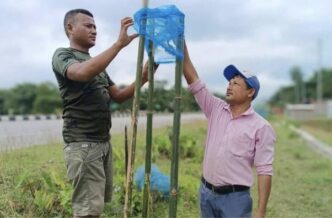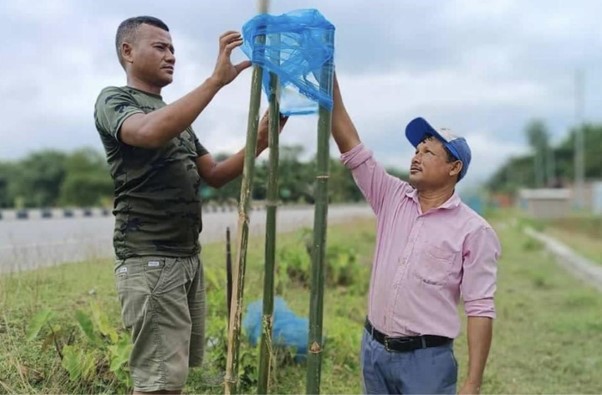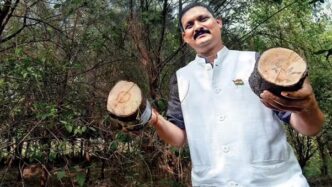What do you do when 12,000 of the trees you’ve lovingly planted over years vanish overnight — cut down in the name of development?
If you’re Budheshwar Ray, you mourn. And then, quietly, without a fuss, you begin again.
For most people, such a loss would have felt insurmountable. But Budheshwar Ray is not most people. A humble government school teacher from Tulungia village in Assam’s Bongaigaon district, he has turned heartbreak into healing, and loss into legacy — simply by refusing to give up.
A Life Rooted in Struggle and Service
Born into a poor farming family, Budheshwar spent his childhood toiling in the fields, closely connected to the rhythms of the earth. Despite facing acute financial hardships, he pursued higher education and fulfilled his dream of becoming a teacher in 2001. But even then, things weren’t easy. For 11 long years, he taught without receiving a salary at a non-provincialised government school.
Most would have walked away. But Budheshwar stayed — quietly committed to nurturing not just minds, but also the land around him.
And somehow, during those unpaid years, he found it in his heart — and his wallet — to do something extraordinary: he began planting trees.
60,000 Trees. One Man. Zero Funding.
Since then, Budheshwar Ray has planted over 60,000 saplings — all with his own money, without any government funding, corporate sponsorship, or NGO support. Every tree is chosen with care: jamun, mango, jackfruit, krishnachura, silk cotton, and more — selected for their fruits, shade, flowers, and ecological value.
His work spans highways, school playgrounds, barren plots, and neglected corners of the district — transforming lifeless spaces into living ecosystems.
But his most cherished achievement? A 12-kilometre green corridor of 12,000 trees along National Highway 31, planted with love and painstaking care over years. It offered shade to travelers, shelter to birds, and hope to an overheated planet.
Until one day, it was gone.
When the Forest Fell
In 2019, during a highway expansion project, all 12,000 trees of the green corridor were cut down.
No notice. No compensation. No public outcry. Just silence — and 12,000 stumps.
It broke Budheshwar’s heart.
But it did not break his spirit.
Where most would have stopped, he started over. On the same stretch. Sapling by sapling. Watering them by hand. Guarding them with his presence. Nursing them back into existence.
No complaints. No bitterness. Just unwavering commitment.
A Quiet Revolution
Today, Budheshwar Ray still teaches full-time. He walks or cycles long distances to water trees. He spends weekends digging pits, collecting seeds, and protecting fragile saplings from cattle, fire, and neglect. His classroom is filled with students — and so is the land outside, where trees stand tall as silent testimonies to his dedication.
He doesn’t seek awards. He doesn’t post selfies. He just keeps planting.
Because for Budheshwar, trees are not a project. They are a way of life. A promise to the future. A quiet rebellion against despair.
Lessons from a Tree Planter
Budheshwar’s story is a powerful reminder that real change doesn’t always come from grand gestures or billion-dollar campaigns. Sometimes, it comes from a single person who refuses to give up.
In an age of climate anxiety, his work offers something rare: hope grounded in action.
He teaches us:
- That one person can make a difference.
- That passion doesn’t need permission.
- That rebuilding is always possible — even after destruction.
- That healing the planet can begin with a single seed.
Planting More Than Trees
Budheshwar Ray is not just planting trees. He is planting resilience. He is planting inspiration. He is planting proof that when love for the Earth is stronger than personal loss, forests can rise again.
So the next time you pass a tree-lined road, or sit under a leafy canopy, remember that somewhere in Assam, a schoolteacher is quietly watering hope.
And maybe, just maybe, we can all pick up a shovel and join him.
Source: The Better India

















